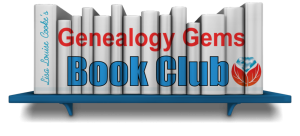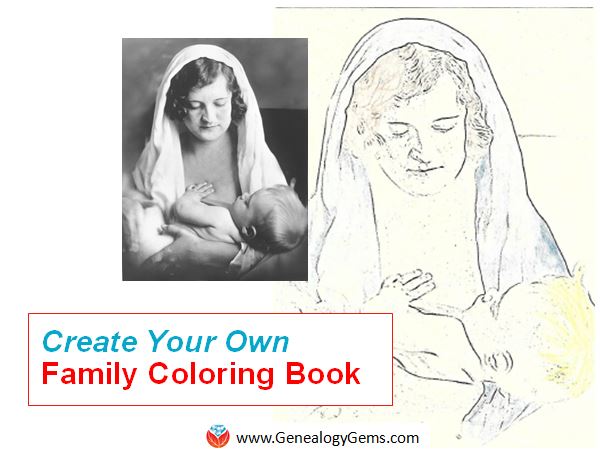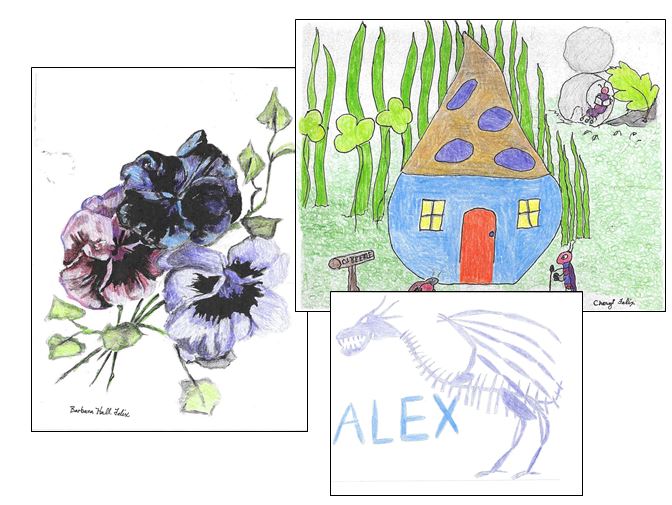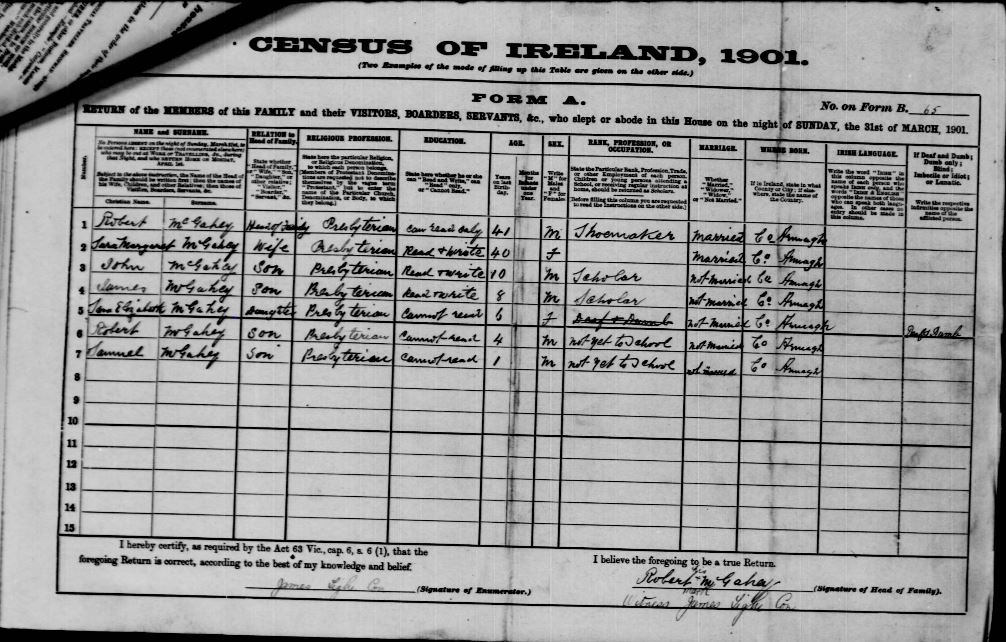by Lisa Cooke | Nov 18, 2014 | 01 What's New, Book Club
 Many of you are reading (or have already finished) our Genealogy Book Club featured book for the quarter, She Left Me the Gun: My Mother’s Life Before Me by Emma Brockes. In the just-published November episode of the Genealogy Gems podcast, Lisa and I talk a little more about this fantastic book from the family historian’s point of view. We get a kick out of how she uses her mother’s dog-eared address book as a family history source.
Many of you are reading (or have already finished) our Genealogy Book Club featured book for the quarter, She Left Me the Gun: My Mother’s Life Before Me by Emma Brockes. In the just-published November episode of the Genealogy Gems podcast, Lisa and I talk a little more about this fantastic book from the family historian’s point of view. We get a kick out of how she uses her mother’s dog-eared address book as a family history source.
What do YOU think of the book? On Thursday, December 4, we invite everyone to post comments on She Left Me the Gun on the Genealogy Gems Facebook page. We welcome comments for a full 24 hours (12am-12am Eastern Standard Time, USA) for our worldwide audience. But we’ll monitor the page and give feedback from 9am-9pm EST. Emma Brockes herself hopes to pop in with comments and responses to your questions. (So start thinking of what you want to say!)

Author Emma Brockes
Of course, I’m really looking forward to the December podcast, when you’ll hear my conversation with Emma about the book. Here’s my favorite quote from the interview:
“When [your] parent dies…your relationship with their history changes almost overnight. It suddenly becomes much more relevant to you because you feel like you are the only one left who is in a position to remember it. So having never wanted to know anything about my mother’s life, suddenly after her death it seemed imperative to me to find out absolutely everything….It felt to me that I couldn’t…stake out the parameters of what I’d lost until I knew everything there was to know about her.” -Emma Brockes, on She Left Me the Gun
Meanwhile, we have two more books to recommend this quarter for our no-fuss genealogy book club, based on YOUR feedback:

One of our listeners, Mary, wrote to us about The Woman in the Photograph by Mani Feniger. She said, “I just ordered this book and thought you might be interested in reading it. I am looking forward to reading it myself.” Here’s a little blurb I found on the book: “Mani Feniger wanted nothing to do with the relics of her mother’s life before she escaped from Nazi Germany in 1936. But when the fall of the Berlin Wall exposed the buried secrets and startling revelations of her mother’s past, she was drawn into an exploration–of history and family, individuality and identity, mothers and daughters–that would change her life forever.”

And here’s a suggestion from Mike: “Here’s a book I found that you and your listeners might also enjoy. The Lost German Slave Girl by John Bailey recounts the story of a poor emigrant family and what happened to one of the daughters. I found it fascinating. The story is non-fiction and takes place around New Orleans in the first half of the 19th century. There is much family research involved, some heart-wrenching descriptions of what the emigrants suffered, and delightful insights into the New Orleans of that time period. It’s the kind of research that we family historians love to do but is more dramatic than many of the personal stories we work on.”
Mark Your Calendar: Thursday, December 4
We invite you to post comments on She Left Me the Gun on the Genealogy Gems Facebook page.
by Lisa Cooke | May 18, 2016 | 01 What's New, Craft & Displays, Gifts, Kids, Photographs
 Coloring books are all the rage for adults and kids. Let this project and these free online tools inspire you to create a coloring book to celebrate your heritage.
Coloring books are all the rage for adults and kids. Let this project and these free online tools inspire you to create a coloring book to celebrate your heritage.
Last Christmas, my mom Cheryl McClellan created a coloring book for our extended family out of family artwork. She requested copies of line drawings from every willing relative, especially her grandchildren (ages 3-20). Then she added her own childhood artwork, some of mine, and some of her mother’s, so four generations are represented.

The flowers on the left, originally painted by my grandma, wasn’t as easily colored because of all the dark areas. My mom’s childhood drawing and my son’s, on the right, both made very “colorable” images.
Then she simply photocopied each page to make it into a coloring page. She experimented with the black-and-white settings until she got the best quality reproductions for coloring.
The grandchildren’s artwork came out the best because they created images meant to be colored (with lots of lines and spaces and no shading). The older artwork reproduced with varying degrees of success. But all were fun to include. She chose not to bind the completed book, so the pages would be easier to color, but instead put each person’s collection of coloring pages in large envelopes.
More tools and ideas: Create a coloring book
To create your own family coloring book, gather family photos (or artwork) from your family archive that would be interesting to color. Consider pictures of relatives, homes, heirlooms, or other objects of significance to your current family life or your family history. The best images will have plenty of contrast in them (lights and darks).
Choose your favorite free online photo editing tool, if you have one. Examples include Pixlr.com and Snapstouch.com. I chose Snapstouch because it’s super easy. Here are the instructions on Snapstouch:
1. From the home page, select which final visual effect you prefer: I chose Sketch. (Depending on the photo and the desired effect, you might also choose Drawing or Outline.)
2. Choose your image file from your computer.
3. Select additional options, as shown here. (In Sketch mode, you can choose a darker pencil sketch and faces to be refined).
4. Click UPLOAD. Wait for the file to upload to the site.
5. After the upload is complete, you’ll see the option to click SKETCH. Click and wait for a moment.
6. If the final image is not to your liking, play with the options (you don’t need to re-upload the photo to do this). OR switch to a different visual effect and experiment.
7. Click DOWNLOAD when you’ve got the image you want.
by Lisa Cooke | Jun 18, 2013 | 01 What's New, FamilySearch, Irish, Records & databases
 If you’ve got Irish roots and haven’t started exploring them, check out Irish Genealogy, recently re-launched by Ireland’s Department of Arts, Heritage and the Gaeltacht. Beginners rejoice: you can read the site in English and there are helpful links on the lower left to introduce you to Irish research and records and to explain how the site works. You can search indexes to church records, the 1901 and 1911 census, tithe records, soldiers’ wills, the Ireland-Australia database and more.
If you’ve got Irish roots and haven’t started exploring them, check out Irish Genealogy, recently re-launched by Ireland’s Department of Arts, Heritage and the Gaeltacht. Beginners rejoice: you can read the site in English and there are helpful links on the lower left to introduce you to Irish research and records and to explain how the site works. You can search indexes to church records, the 1901 and 1911 census, tithe records, soldiers’ wills, the Ireland-Australia database and more.

Irish census, 1901, sample image from Irish Ancestors website.
According to Dick Eastman, the Irish government plans to put its own indexes to birth, death and marriage records (back to 1845) on the Irish Genealogy website. FamilySearch currently has an index to 23 million Irish Civil Registrations (1845-1958), which includes births, marriages and deaths, but excludes records for what became Northern Ireland after 1922. (They’ve also got lots of Irish court, tithe and prison records, too.)
It isn’t always easy to find your Irish ancestors–you may need to call on that proverbial Irish luck–but websites like these may very well be your own ancestral pot ‘o gold.
by Lisa Cooke | Feb 26, 2015 | 01 What's New, Beginner, images, Newspaper, Records & databases, United States
“Do you have obituaries for all your relatives who have died in the past 40 years or so? You should.”
Obituaries–even the most recent ones–can jump-start your research on a new family line or tackle a branch that doesn’t seem to be going anywhere.
Why? Our “collateral kin” (cousins, aunts and uncles) often lived near, intermarried with and otherwise had contact with other relatives we really want to find.
That’s where recent obituaries come in. The lists of names they contain help us identify relatives (and their spouses) we may not even have known about. Places mentioned can lead us to more records, as can clues about jobs, church affiliation and where someone went to school.
FamilySearch and GenealogyBank are indexing millions of recent obituaries from GenealogyBank’s extensive newspaper collection. Search the free index, with ongoing updates (24.4 million names recently added) at United States, GenealogyBank Obituaries, 1980-2014. Search by name or browse by state and then by the name of the newspaper. Check back often!
Click here to read a post about how valuable an obituary was in helping me learn more about my long-lost great uncle Paul McClellan.
Learn more about newspaper research (including how to find obituaries) in Lisa’s book How to Find Your Family History in Newspapers. There’s an entire chapter on online digitized newspaper collections, and one on online resources for finding newspapers (either online or offline). Yet another chapter is devoted to African American newspapers. This book will teach you to find all those elusive obituaries–and plenty more mentions of your family in old newspapers.
by Lisa Cooke | May 17, 2015 | 01 What's New, Ancestry, Blogs, Digital Archives, FamilySearch, images, Video
 More old home movies are being digitized and more historical footage is coming online. Do you know how to integrate these with your family tree or blog? Wouldn’t it be great to show that you found great-grandpa in four censuses, the SSDI and a 1937 news reel showing him driving his fire truck? (That really did happen to me. Click here to read about it and see the footage.)
More old home movies are being digitized and more historical footage is coming online. Do you know how to integrate these with your family tree or blog? Wouldn’t it be great to show that you found great-grandpa in four censuses, the SSDI and a 1937 news reel showing him driving his fire truck? (That really did happen to me. Click here to read about it and see the footage.)
Here a few ways you can share your old family footage online:
1. If you have have a free Google account, then you have a free YouTube channel! You can upload old footage as well as movies YOU make of still images. Then you can use the Share > Embed feature to include the video on your own genealogy blogs. Click here to watch an inspiring video Lisa made about her ancestor, a nurse in training.
2. If you have Legacy Republic digitize your old family movies, you can upload them through your Legacy Republic account into your FamilySearch family tree. (Click here to watch a video about how it works.)
3. Add an online video source citation to your Ancestry tree. Create a new source in an ancestor’s individual profile. The Source Citation section asks for any URL related to this citation. Enter the URL. Then it asks whether you have media items to attach. You will be walked through the process of uploading video from your own computer. If you choose the option to record a video, Ancestry will access your computer’s microphone and camera and record you speaking for up to 12 minutes.
 Wish you knew more about how making or finding family footage? Learn more here:
Wish you knew more about how making or finding family footage? Learn more here:
- Genealogy Gems Premium members can click here to access a Premium podcast and video on how to create your own family history video (learn more about Premium membership here).
- Click here to watch Lisa’s free YouTube series about blogging your family history or click here to listen to free Family History Made Easy podcast episodes about genealogy blogging (episodes 38-42).
- Learn about finding and using old film footage on YouTube and other websites in the updated-for-2015 2nd edition of The Genealogist’s Google Toolbox (there’s an entire, expanded chapter on YouTube that inspired my own find of that 1937 newsreel).
 Many of you are reading (or have already finished) our Genealogy Book Club featured book for the quarter, She Left Me the Gun: My Mother’s Life Before Me by Emma Brockes. In the just-published November episode of the Genealogy Gems podcast, Lisa and I talk a little more about this fantastic book from the family historian’s point of view. We get a kick out of how she uses her mother’s dog-eared address book as a family history source.
Many of you are reading (or have already finished) our Genealogy Book Club featured book for the quarter, She Left Me the Gun: My Mother’s Life Before Me by Emma Brockes. In the just-published November episode of the Genealogy Gems podcast, Lisa and I talk a little more about this fantastic book from the family historian’s point of view. We get a kick out of how she uses her mother’s dog-eared address book as a family history source.



 Coloring books are all the rage for adults and kids. Let this project and these free online tools inspire you to create a coloring book to celebrate your heritage.
Coloring books are all the rage for adults and kids. Let this project and these free online tools inspire you to create a coloring book to celebrate your heritage.


